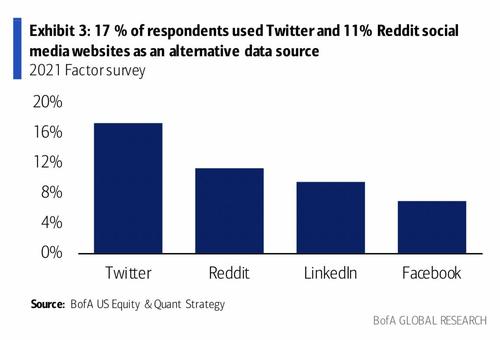Biotech stocks are tricky investment bets that require careful analysis and scrutiny. A stock that has fallen off a cliff in reaction to a binary event can neither be written off entirely nor picked as a bargain buy. A lot of background research should go into the stock, company pipeline, cash runway, and other factors before an investment decision can be made.
Here's a list of biotech stocks that were among the worst performers in the first half but have the potential to come back stronger:
Immunovant, Inc IMVT 3.08%
Year-to-date loss: (-77%)
Immunovant is a one-trick pony. Its investigational product candidate IMVT-1401 is a novel, fully human monoclonal antibody. It has the potential to address a variety of IgG-mediated autoimmune diseases as a subcutaneous injection.
The company's shares nearly halved in early February when it announced a voluntary pause of dosing in its ongoing clinical trials. The pause followed identification of physiological signal consisting of elevated total cholesterol and LDL levels in IMVT-1401-treated patients in ASCEND GO-2, a Phase 2b trial in thyroid eye disease.
The stock came under further pressure in mid-February when it released its fourth-quarter results for 2020. The first-quarter results reported in early June resulted in more selling off.
Upcoming Catalyst: Resumption of clinical development of IMVT-1401, including in a potentially pivotal trial in myasthenia gravis and a phase two study of warm autoimmune hemolytic anemia, could positively impact the stock. The company has indicated a late 2021 or early 2022 timeline for the resumption.
ChemoCentryx, Inc. CCXI 0.15%
Year-to-date Loss: (-77%)
ChemoCentryx, which focuses on developing inflammatory and autoimmune diseases and cancer treatments, was once a high flier. The company's shares began a downtrend in early March following its financial results for the fourth quarter of 2020.
A steeper sell-off ensued in early May following the release of a briefing document ahead of an Adcom meeting to review its new drug application for avacopan to treat antineutrophil cytoplasmic autoantibody-associated vasculitis. ANCA-associated vasculitis is the inflammation of small blood vessels that can eventually lead to organ failure due to the reduced blood flow through the inflamed blood vessel. The split Adcom verdict announced May 6 pressured the stock further.
The company has a diverse pipeline, consisting of assets targeting orphan diseases, oncology, inflammatory and autoimmune diseases, and chronic kidney diseases.
Upcoming Catalyst: Avacopan will face another key test when the FDA decides on the drug's potential approval on July 7. Expectations are muted given the lukewarm Adcom reaction. European regulators are likely to rule on the drug in the second half.
The company is also planning a Phase 3 trial of avacopan in severe hidradenitis suppurativa patients and discuss evidence of clinical benefit of avacopan in C3 glomerulopathy with the FDA following ACCOLADE results.
Sigilon Therapeutics, Inc. SGTX 2.45%
Year-to-date Loss: (-77%)
Shares of Sigilon have been on a secular downtrend since peaking at $45 in mid-February. The company's clinical programs focus on rare blood disorders, lysosomal diseases, and endocrine and other chronic diseases. Most of the pipeline candidates are preclinical assets, except for SIG-001, which is in Phase 1 development for severe-to-moderate hemophilia A.
Upcoming Catalyst: Sigilon expects to disclose up to nine months of follow-up data for three to four patients from the Phase 1/2 hemophilia A study in the third quarter of 2021. It also expects to complete enrollment of the study in the second half of 2021.
Athira Pharma, Inc. ATHA 0.47%
Year-to-date Loss: (-69%)
Athira is a clinical-stage biopharma focused on developing therapies for neurodegenerative diseases. It pursues a novel approach called neuronal health that uses small-molecule treatments designed to work by targeting specific, naturally occurring repair mechanisms.
The company's pipeline consists of ATH-1017, which is in Phase 2 development for Alzheimer's disease and Parkinson's disease dementia. It has two preclinical assets, namely ATH-1020 and ATH-1018.
Athira shares came under pressure in January after it raised $90 million through a common stock offering. From a rangebound phase, the stock dipped sharply in early June, when the company placed its then-CEO Leen Kawas on temporary leave pending a review of actions stemming from doctoral research she conducted while at Washington State University.
Upcoming Catalyst: Athira targets an IND submission for ATH-1019 and ATH 1020 by the end of 2021. The removal of the overhang over the scandal concerning its ex-CEO could also be optimistic for the stock.
Imara Inc. IMRA 2.09%
Year-to-date Loss: (-63%)
Imara, a biopharma developing therapies for rare genetic disorders of hemoglobin, saw its shares slide early this year. The negative catalyst was data from the Phase 2a clinical trial of IMR-687 in adult patients with sickle cell disease.
Following the data release, SVB Leerink analyst Joseph Schwartz said COVID-19 impacted the quality of data due to aspects such as failed hospital visits. Additionally, the dosage evaluated was much lower than the company's dose to move ahead with the Phase 2a open-label expansion and the Phase 2b studies.
According to the analyst, the dataset represented a rearward-looking view of IMR-687's development and is likely not a good indicator of the robustness of data we expect to see in IMR-687's future readouts.
"Therefore, we see the stock's weakness on the news as a potential buying opportunity ahead of IMRA's multiple data readouts in 2021," Schwartz said in the note.
Upcoming Catalyst: Imara is scheduled to report interim analyses for Ardent sickle cell disease and Forte beta-thalassemia Phase 2b clinical trials in the second half of 2021.
https://www.benzinga.com/general/biotech/21/07/21796177/biotech-losers-in-2021-that-could-bounce-big-in-the-second-half


